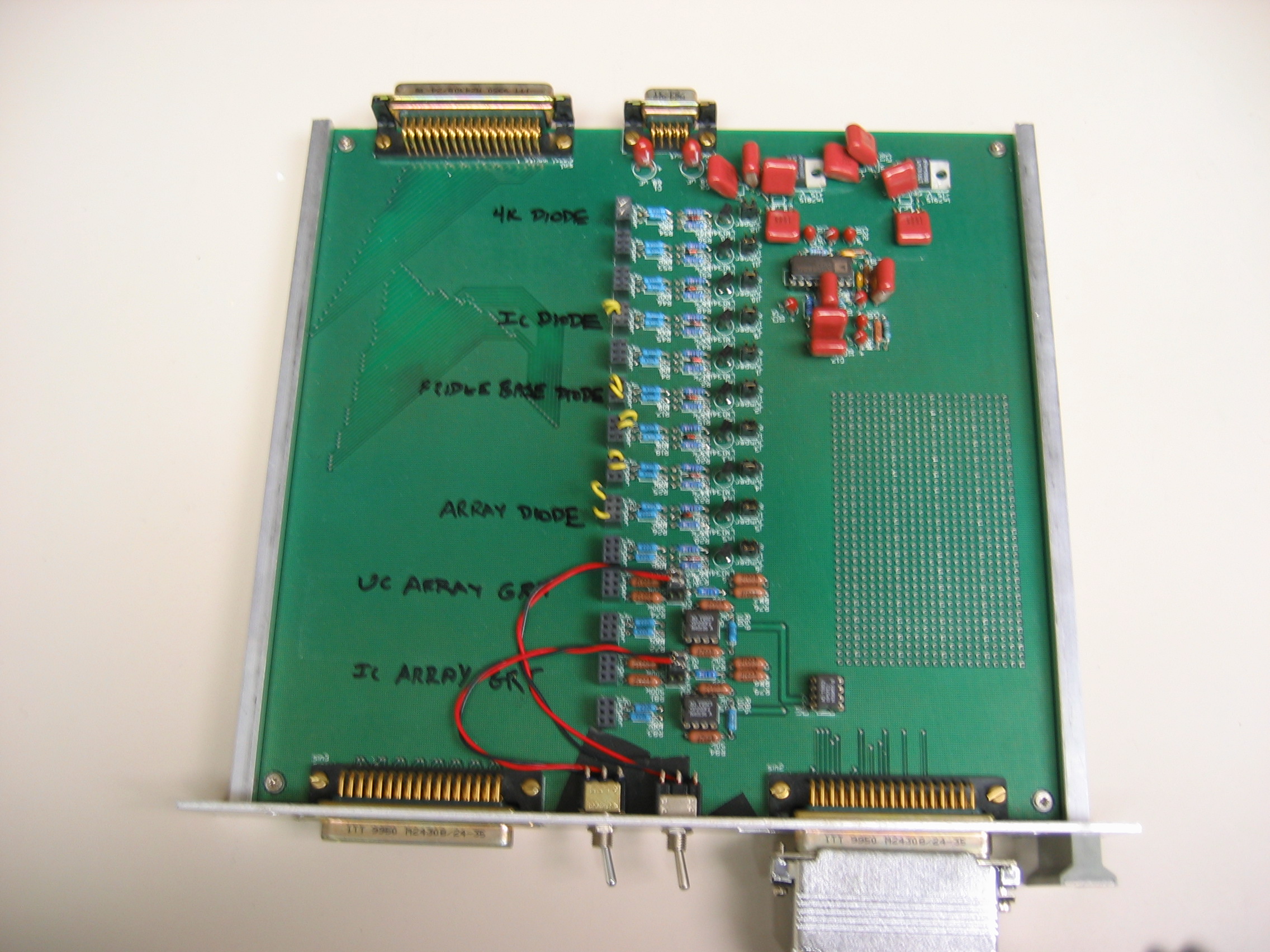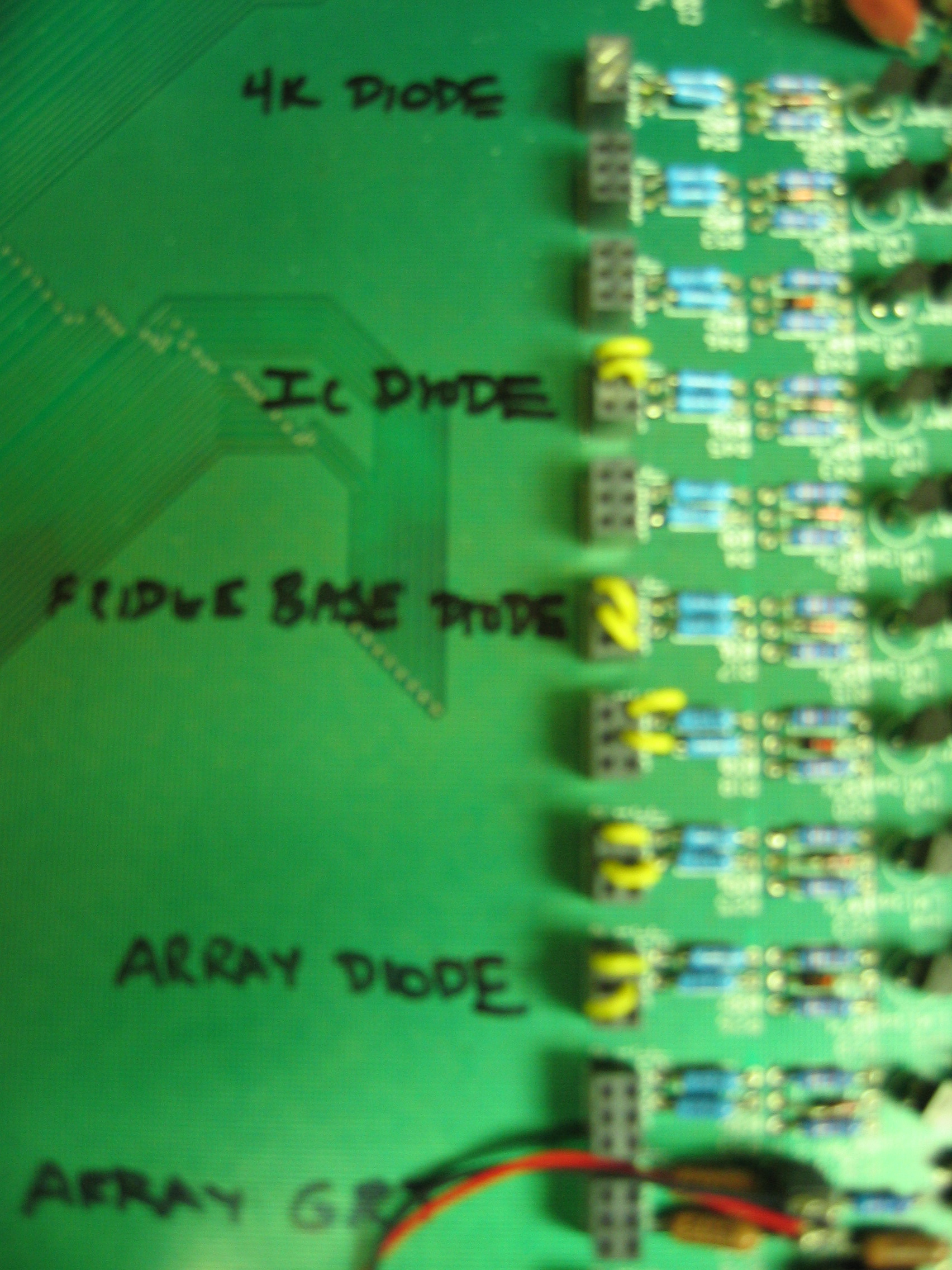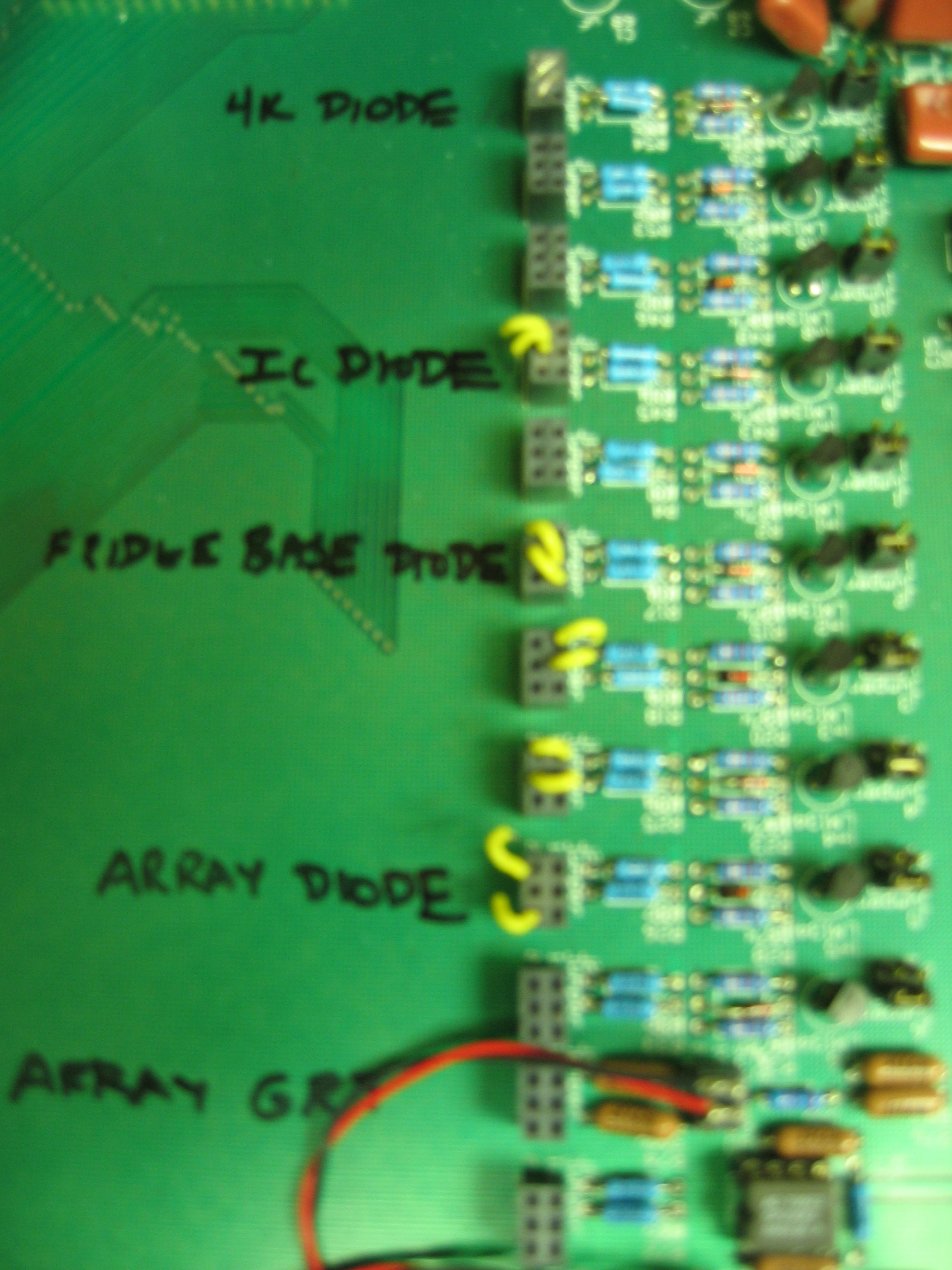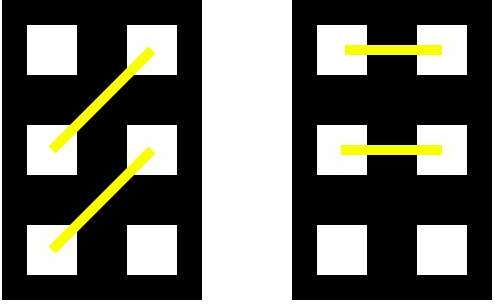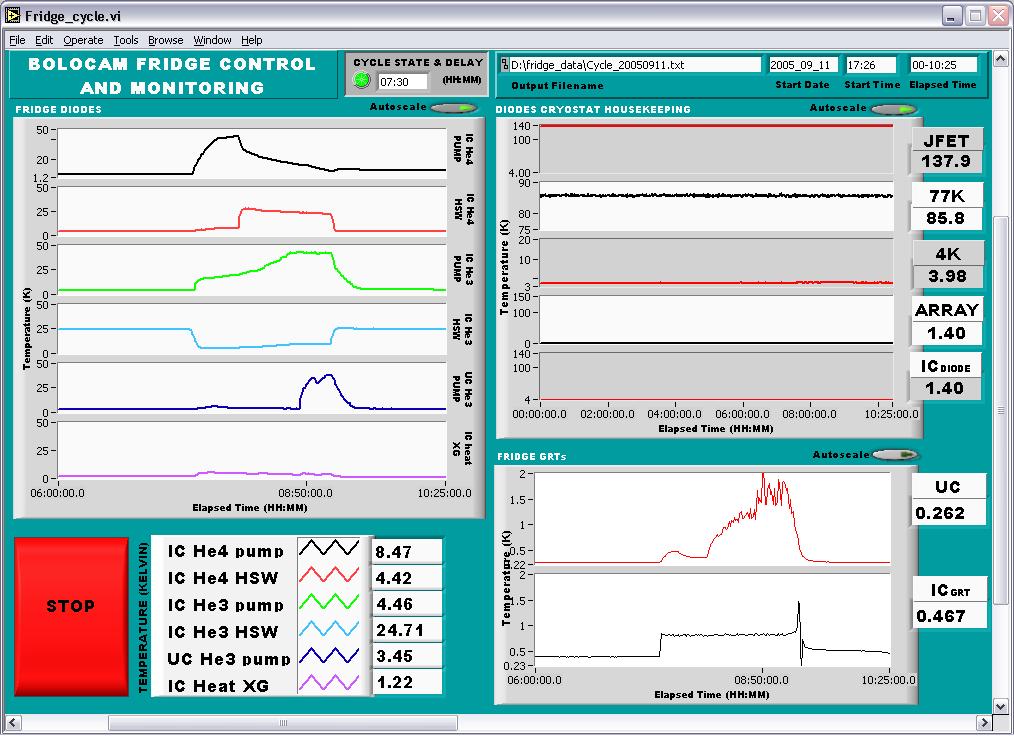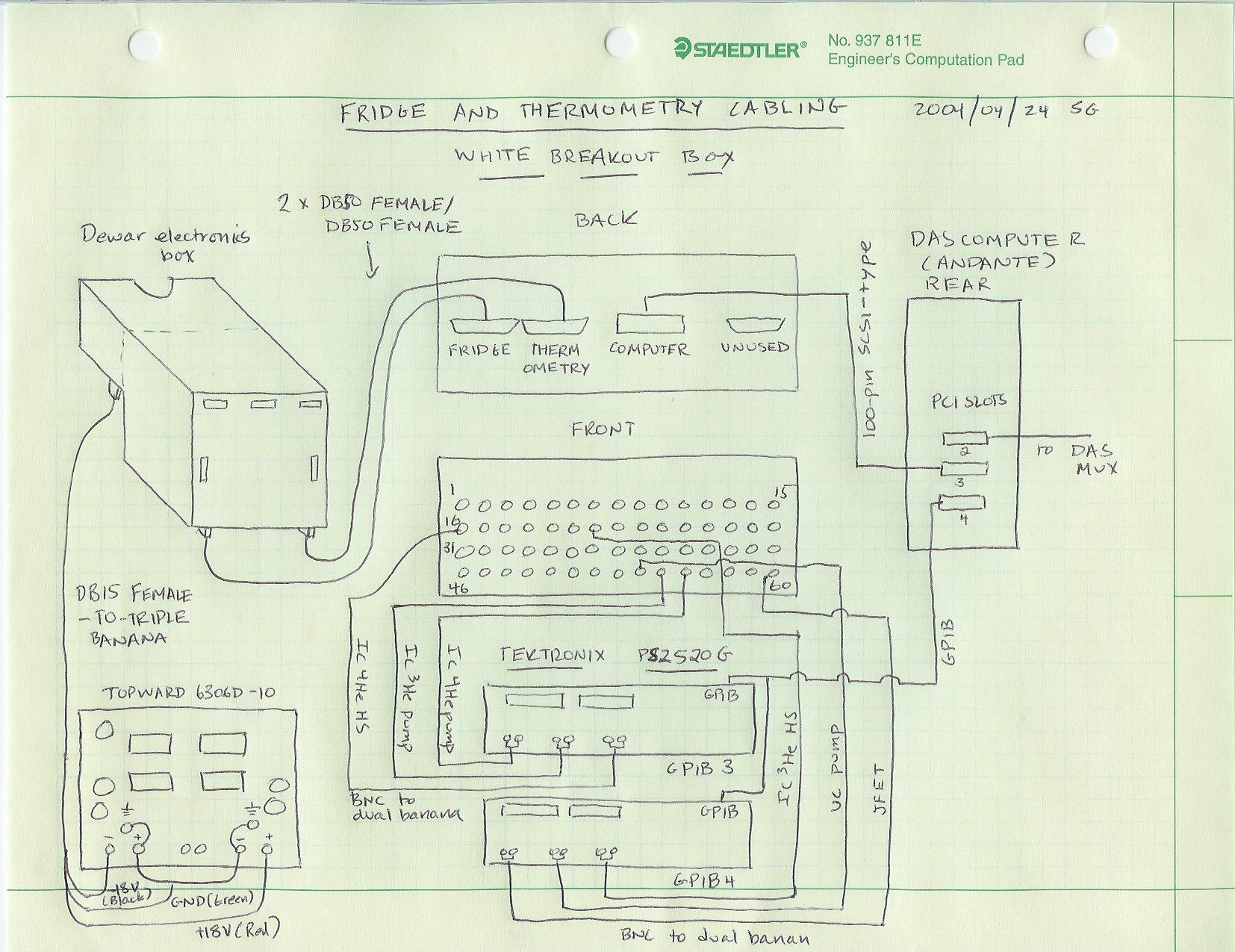Nominal settings: These are the
"nominal" settings for the supplies, when you don't want any of the
heaters on. Do this with
the outputs
OFF so that you
can see the limits, not the actual values. Once you have made the
settings, you should hit the
OUTPUT
button to turn the outputs
ON.
It's actually not too important to set these nominal values anymore; as
of April, 2004, the fridge control program initializes all the supplies
(except the JFET supply) as necessary at the start of the cycle.
Enabling
front panel control: The
LOCAL
button makes it possible to control the supply using the front panel;
if the supply is not in
LOCAL
mode, the front panel is locked out and the supply is controlled by
GPIB. You can feel free to press the
LOCAL button at any time, even
during a fridge cycle -- the fridge computer can still control the
supplies. If the
power supplies do not appear to be responding even after pressing the
LOCAL button, it may be because the
fridge_cycle
program is simultaneously trying to read them. Set the sample
rate on
fridge_cycle to some
relatively large value (less than 1 per minute) and then attempt to
program the supplies. Set the sample rate for
fridge_cycle
back to its original value afterward.
Enabling
the outputs: There is an
OUTPUT
button that enables/disables
the outputs. The
OUTPUT
button controls relays that actually connect the internal
supplies to the output banana jacks. Thus, even if you have set
the output currents and voltages, they won't actually be activated
until the
OUTPUT button has
been pressed. Conversely, if the output currents and or voltages
are set to 0, then pressing the
OUTPUT
button will not do anything except energize the relay; current will not
necessarily flow. On the display, in the upper right corner,
there is an
OUT light that
will be on if the outputs are enabled (1st row, 4th column in matrix of
status lights).
How to
select which channel is displayed: To set which
output is displayed/controlled via the keypad: find the keys that say
OUT1,
OUT2,
OUT3 in light blue above them.
Press the
SHIFT button and
then press whichever of these buttons corresponds to the output you
want to display/control. Note that the supply must be in
LOCAL mode for these (or any other)
buttons to work. The first column of the matrix of status lights
has three lights indicating which supply is being displayed.
How the displays work: The displays do
different things depending on what state the supply is in. When
the outputs are off (
OUT light
off), then the displayed current and voltage are the values that have
been set (see
To set outputs currents and
voltages below). When the outputs are on (
OUT light on), then what is shown
is the actual current and voltage. What these are depends on the
settings. Though you set a current and a voltage, the supply
can't necessarily satisfy both of these settings. It picks the
"lower" one. For example, if you set 50 mA and 35 V for the UC
pump heater, which has a total resistance (including leads) of maybe
250 ohms, then you will see 0.050 A and 12.5 V on the display because
50 mA x 250 ohms = 12.5 V < 35 V. The current and voltage
settings thus act in some sense as limits for each other.
To set output currents and voltages:
- Select the output you want.
- On the numeric keypad are CURRENT
SET and VOLTS SET
buttons. Press the one you want.
- Enter the value you want to set using the buttons, e.g., for 35
mA, hit 0 . 0 3 5 followed by
the enter button, which is an arrow with a right angle in it.
- What you see on the display will depend on whether the outputs or
on or off -- see How the displays work above.
There is now a program for direct
control of the power supplies
available on the DAS computer. Go to the desktop of the DAS
computer,
open the shortcut to the FRIDGE
folder, and double-click on ManualPSUControl.
Hit the arrow in the upper left corner to start the program. The
bottom two rows of displays indicate the current power supply
settings. Set the middle two rows of controls to the desired
settings. Note that you must set all
the controls appropriately, even the ones you don't want to change;
when the program commands the power supplies, it sets all of the
control values. When you are ready to issue the command, press
the
button on the left side of the panel that says "Press to set PSU
values". The bottom two rows of displays should then update to
reflect
your new settings. If you have problems, press the Reset button
in the
upper left and try setting the power supply values again.
Note that the current and voltage indicators show the actual currents and voltages, not
the programmed ones.
There may be interference of this program with the standard fridge
cycle program if they try to communicate simultaneously with the fridge
power supplies. To avoid such interference, set the fridge
control program to a slow sampling rate (1 per minute or slower) before starting ManualPSUControl,
and then do your manual commands in the interval between samplings by fridge_cycle,
and then stop ManualPSUControl.
If the programs seem to interfere (very slow reading of supply
settings, nonsense or mixed-up values), then just kill ManualPSUControl
using the red stop-sign button in the upper left of the screen and try
again. Note that the normal stop button on the front panel of ManualPSUControl
will not work if it is hung in the communication cycle.
